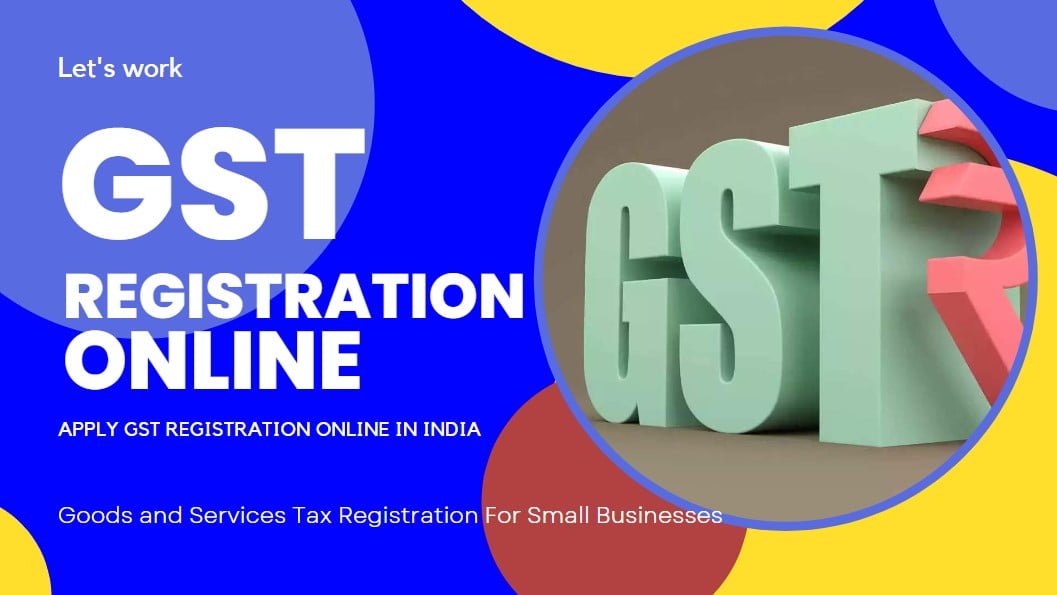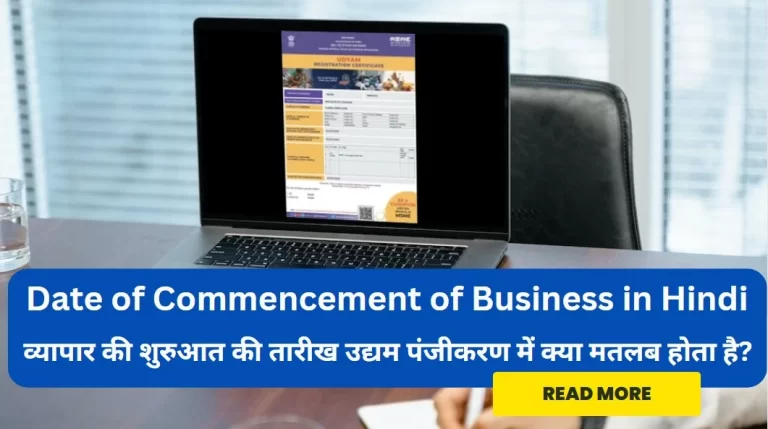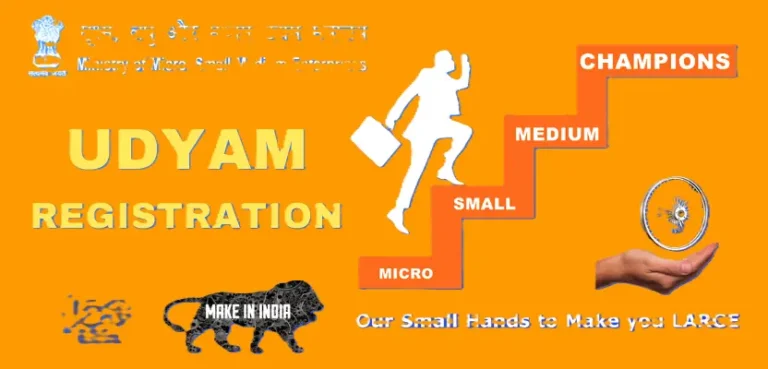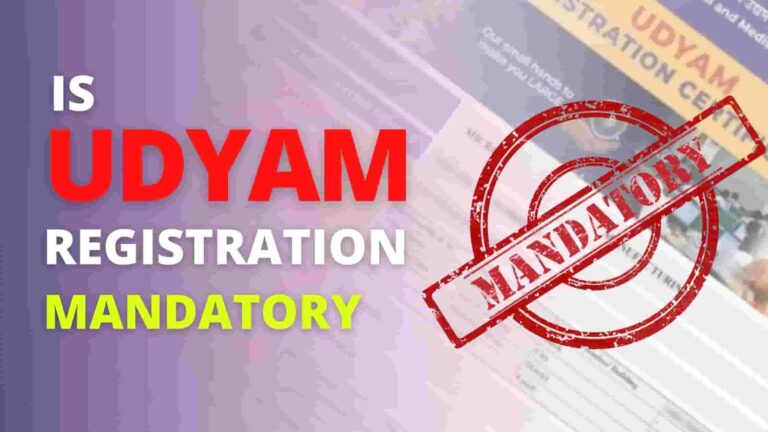Completely managed GST registration service until obtaining GSTIN (GST number) with Expert Support.
GST REGISTRATION FORM – Complete Online GST Document Submission & GSTIN Generation Done Here.
GST Registration in 7 business days. Enjoy hassle-free processing as GST expert lays the groundwork for your business.
- Filing of Application for GST Registration
- Secure GST Identification Number
- Dedicated manager to process your GST registration end to end
- Completely Online – No need to visit office
- CA Assisted GST Filing for all your GST needs
Attention: During the process we will require verification OTP, in order to proceed with the online GST registration process.
The Goods and Services Tax (GST), which went into effect on July 1, 2017, affects all producers, traders, and service providers in India, including independent contractors. A number of central taxes, including service tax, excise duty, and CST, as well as state taxes, including entertainment tax, luxury tax, octroi, and VAT, were combined into one tax on July 1, 2017, known as GST. Every stage of the supply chain will be charged GST, with full set-off privileges available. GST registration is done totally online without any manual input and also note that GST registration is free of cost.
Along the supply chain, every product goes through a number of steps, including buying the raw materials, manufacturing, selling to the wholesaler, selling to the retailer, and then selling to the customer. It’s interesting to note that GST will be applied to all 3 levels. Let’s assume that if a product is made in West Bengal but used in Uttar Pradesh, all of the proceeds will go to that state.
Additionally, to avoid cumbersome GST requirements and pay GST at a set rate of turnover, taxpayers with a turnover of less than Rs. 1.5 crore can choose the composition plan.
A tax on products and services used in India is known as the Goods and Services Tax (GST). In India, the GST has mostly superseded other indirect taxes including excise duty, VAT, and services tax. Based on the Goods and Service Tax Act, which was approved by the Indian Parliament on March 29, 2017, GST became effective on July 1st, 2017.
How Does GST Registration Work For You?
Any company selling products or providing services with an annual revenue of at least $40,000 or $20,000 must register for GST and have a valid GST Number.
Step 1 : Get a Secure GST Identification Number with our assistance.
Step 2 : You can easily obtain your GST registration at home, today to our convenience.
Step 3 : When necessary, we will file your returns and take care of any other compliances.
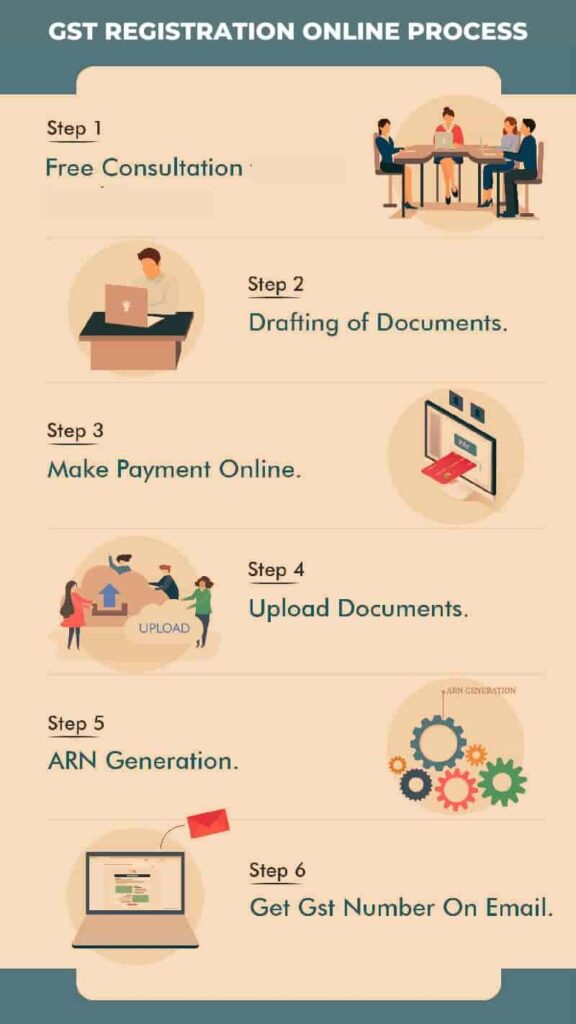
GST Registration Fees
The lengthy 11-step process of applying for GST REGISTRATION requires the submission of a large amount of business information as well as scanned documents. Although the GST law does not specify any costs for self-registration on the GST system, using our GST registration online process can save you a ton of time and trouble. A GST Expert will assist you with GST Registration from start to finish if you choose our online GST Registration services.
Taxable Person to GST
A person who conducts business in India and is registered or is required to be registered under the GST Act is referred to as a “taxable person” under the GST Act. An individual, HUF, company, firm, LLP, an AOP/ BOI, any corporation or Government company, a body corporate formed under the rules of a foreign nation, cooperative societies, local governments, trusts, or artificial juridical persons are all examples of taxable individuals.
What Are The Types Of GST Are There?
The Goods and Services Tax (GST) will have three tax components: a central (Central Goods and Services Tax, or CGST) and a state (State Goods and Services Tax, or SGST) component. Both the federal government and each state will impose the GST on all entities, or whenever a transaction takes place within a state. When a transaction occurs from one state to another, it will be subject to the Integrated Goods and Services Tax (IGST), which will be imposed by the central government.
What Is The Input Tax Credit?
With the help of input tax credits, you can pay less tax now on inputs and the remaining balance when it comes time to file your taxes.
When a product is acquired from a registered seller, taxes are paid on the transaction, and you also collect taxes when you sell the product. With input credit, you can reduce the taxes paid at the time of purchase by the amount of sales tax (output tax) and pay the remaining tax obligation, which equals the difference between the tax on sale and the tax on buy.
What are the GST tax rates? What is GST Rate?
Basic requirements are included on the exempt list, which means they are not subject to tax.
Life-saving medications, among other things, are taxed at 5%.
Computers and processed food are subject to a 12% tax.
Capital goods, industrial intermediaries, soaps, toothpaste, and other personal care products are all subject to an 18% tax.
The tax rate on luxuries is 28%.
Here, at https://cbec-gst.gov.in/gst-goods-services-rates.html, you may view the tax rates for every product.
Look at the GST calculator, which is useful for figuring out the Goods and Service Tax using various slabs.
What is the GST Registration Process?
If you are looking for new GST registration, then follow this step. The GST registration process is very simple and easy for the small scale business owner who is looking for a GSTIN number for their businesses.
STEP 1: Visit the GST registration portal.
STEP 2: Fill out the GST registration form correctly.
STEP 3: Make the online service payment.
STEP 4: Our representative will handle your GST application, check all of your documents, and start the GST online registration procedure.
STEP 5: Within 7-15 days of time your GST number and GST registration certificate will be emailed.
Note: During the GST process you need to share the OTP, for proceeding for GST registration.
Limitation on GST Registration Turnover
Regardless of turnover, anyone or any company can voluntarily register for GST. If a person or organisation sells more goods or services than a predetermined threshold, GST registration is required.
Service Providers: GST registration is necessary for any individual or organisation that generates an annual total of more than Rs. 20 lakh in revenue from providing services. The GST turnover cap for service providers in special category states has been set at Rs. 10 lakhs.
Goods Suppliers: Per notice No. 10/2019, everyone involved in the exclusive supply of goods with an annual gross revenue of over Rs. 40 lakhs is required to register for GST. The supplier must meet the following requirements in order to be eligible for the Rs. 40 lakhs turnover limit:
Ought not to be offering any services.
In the States of Arunachal Pradesh, Manipur, Meghalaya, Mizoram, Nagaland, Puducherry, Sikkim, Telangana, Tripura, and Uttarakhand, the provider shall not be involved in making intra-state (supplying commodities within the same state) deliveries.
Should not be a part of the tobacco, pan masala, or ice cream supply chains.
When the turnover reaches Rs. 20 lakhs, or Rs. 10 lakhs in special category states, the provider of products would be forced to register for GST if the aforementioned requirements are not met.
Special Category States: Arunachal Pradesh, Assam, Jammu and Kashmir, Manipur, Meghalaya, Mizoram, Nagaland, Sikkim, Tripura, Himachal Pradesh, and Uttarakhand are listed as special category states under the GST.
Aggregate Turnover: Turnover in the aggregate is calculated as follows. Turnover in the aggregate is equal to (Taxable Supplies + Exempt Supplies + Exports + Inter-State Supplies) – (Taxes + Value of Incoming Supplies + Value of Supplies Taxable under Reverse Charge + Value of Non-Taxable Supplies).
The PAN is used to calculate aggregate turnover. Therefore, even if a single person operates many businesses, the whole turnover must be added up.
GST Registration Types
There are different GST registration categories, including regular, occasional, non-resident, and eCommerce operators. Regardless of the turnover threshold, casual taxpayers, non-resident taxpayers, and eCommerce businesses must register for GST.
A casual taxable person is someone who occasionally provides goods or services in a State or a Union territory where the entity does not have a fixed place of business, according to the GST Act. As a result, individuals operating transient businesses at fairs or exhibitions or seasonal enterprises would be considered casual taxable people under the GST.
Non-resident Taxable Persons: Under the GST, a non-resident taxable person (NRI) is any individual, business, or organisation that provides goods or services but does not have a permanent home or place of business in India. As a result, any foreign individual, corporation, or organisation supplying goods or services to India would be considered a non-resident taxable person and would need to abide by all GST laws in India.
E-Commerce Operators: Anyone who owns, runs, or oversees a digital or electronic facility or platform for electronic commerce is considered an e-commerce operator. Therefore, regardless of business revenue, anyone who sells online can be considered an eCommerce Operator and is therefore required to register for GST.
What is GSTIN?
Entities with a GST registration number are given a GSTIN, or Goods and Services Tax Identification Number (GSTIN). GSTIN has a length of 15 characters. Based on the applicant’s PAN and State, a GSTIN is assigned. The State Code is represented by the first two digits of a GST registration number. The applicant’s PAN is represented by the next 10 numbers.
Download GST Registration Certificate
Access the GST Registration Certificate here without GST login, as we will provide the registration service.
People who have registered for GST are given a GST Certificate. Those who have a GST registration certificate are required by law to conspicuously display the certificate at their place of business. Through the GST Portal, downloading a GST certificate is a rather simple process. Go to User Services after logging into your GST Account. To download the GST registration certificate, go to User Services and select View / Download Certificate.
Simply Register for GST
Through us, you can get your GST registration in less than 7 working days. To start the process, enter your name, phone number, and email address.
A GST specialist will get in touch with you as soon as we get your request to learn more about your business, the state in which it is located, and to address any issues you might have.
The GST specialist will also gather and check the paperwork needed to apply for GST registration. As soon as the payment is started, the GST registration process begins, and all of your applications are uploaded to the GST Portal.
The GST registration is obtained in 3 to 7 working days. There is no requirement for physical presence in the office because everything is done online. Access to the LEDGERS Platform is given along with the GST registration, allowing you to complete GST billing and GST return filing.
GST Return Filing
A GST Return Filing is a report that includes information about the taxpayer’s income. It needs to be submitted to the administrative body for GST. Tax authorities use the document to determine a GST taxpayer’s tax liability. The following information must be included on a GST Return Filing form.
- GST output (On sales)
- Sales
- Tax credit for input (GST paid on purchases)
- Purchases
You must submit GST-compliant sales and purchase invoices when filing a GST Return.
Voluntary Basis Register for GST
Regardless of annual revenue, any person or organisation that desires to offer products or services can voluntarily register for GST. The business can issue GST invoices to consumers and qualify for Input Tax Credit by voluntarily registering for GST.
Penalty For Failing To Register for GST.
Any individual or organisation that exceeds the aggregate turnover threshold is required to register for GST within 30 days of becoming subject to registration requirements. A penalty of Rs. 10,000 can be imposed for lateness or noncompliance, and the input tax credit earned during the wait will be lost.
Let us check the GST registration documents before proceeding for the GSTIN number.
Documents Required for GST Registration
The following list of GST registration documents is needed for GST online registration for different types of businesses:
| Sole proprietor / Individual |
|
| LLP and Partnership Firms |
|
| HUF |
|
| Company (Public and Private) (Indian and foreign) |
|
Including what serves as identification, A PAN card or an Aadhar card can be used as identification. Any director may present their voter identification card, passport, telephone bill, power bill, and telephone bill as evidence of address.
Telephone Bill
Most recent telephone bill for the location where a GST registration application is being made in some states.
Electricity Bill
The most recent electricity bill for the location where the GST registration application was made.
Real estate Tax Receipt
The most recent property tax receipt for the location where the GST registration application was made.
Rent/Lease Agreement
A lease or rental agreement is necessary if the property is rented or leased.
Size of a Passport Photo
passport-sized photograph of the GST-authorized signatory
Deed of Partnership
A copy of the Partnership Deed must be provided if the applicant is a partnership firm.
A Certificate of Incorporation
In the case of a company or LLP applicant, a partnership deed is required.
I.D. Card
PAN card for the GST authorised signatory.
ID Card, Aadhaar
The Authorized signatory’s Aadhaar card for GST.
Consent Form
If a person uses the property without a rental agreement.
Advantages of Registering for GST
One or more of the benefits of GST registration are as follows:
Bank Loans: GST registration and submission of GST returns serve as evidence of business activity and build a business’s track record. Based on information from GST returns, banks and NBFCs lend to businesses. Therefore, GST registration might assist you in formalising your company and obtaining financing.
Supplier Onboarding: GST registration is frequently a requirement throughout the supplier onboarding process in order to become a supplier of reputable businesses. Consequently, GST registration can aid in increasing your revenue.
eCommerce: Having a GST registration would enable you to sell online as it is a requirement to do so on sites like Amazon, Flipkart, Snapdeal, Zomato, Swiggy, and others.
Input Tax Credit: Organizations that have registered for GST are allowed to charge GST to customers for their purchases and claim an input tax credit for the GST they have already paid on other products and services. Therefore, GST registration might lower your tax bill and increase your profit margins.
GST Application Preparation
All the necessary documents will be gathered by one of our GST representatives, who will then complete the GST application via the communication platform.
GST Application Filing
The application will be handled and filed after all the necessary paperwork is gathered. The ARN number will then be given out right away.
GST Registration Certificate
The GST officer will issue the GST registration certificate and GSTIN after reviewing the GST application and other required papers. Please be advised that the certificate will not be printed on paper and that you can get a copy of your GST registration certificate from the GST Portal.
Penalties For Failure To GST Registration
All taxable persons in India who fail to register for GST are subject to a direct fine under Section 122 of the CGST Act.
GST Voluntary Registration (for Companies With A Turnover Below Rs.20 Lakhs)
Although it is not required by law, any small firm with a turnover of less than 20 lakh rupees can voluntarily register for GST. The following are some benefits of voluntary GST registration:
- Consider input credit: In the GST system, input credit flows continuously from the country’s product makers to the consumers. The term “input credit” refers to a taxpayer’s ability to subtract the tax already paid on inputs from the output tax due and pay only the balance due. Businesses that voluntarily register might do this to boost their margins and earnings.
- Do interstate business without restrictions: SMEs can expand their markets, locate new clients, and investigate online platforms.
- Register on e-commerce sites: By registering on e-commerce sites, SMEs can expand their market.
- Possess a competitive edge over rival companies.
Frequently Asked Question on GST Registration
What is the cutoff date for GST registration?
Within 30 days of fulfilling the requirements, an entity that must be registered under GST must submit an application for registration. Prior to starting a business, casual taxpayers and non-resident taxpayers must register with the GST.
Who is the principal signatory with authority?
The person in charge of doing tasks on the GST portal on behalf of the taxpayer is known as the principal authorised signatory. It might be the business’s promotion or another dependable person suggested by the business’s promoters.
Is PAN a requirement to register for GST?
Yes. PAN is required in order to register for GST. The proprietor’s PAN may be utilised in the case of a proprietorship. PAN must first be issued for the entity in the event of an LLP, Company, Trust, or another type of legal entity. PAN is not necessary for foreign individuals or foreign businesses to register for GST, nevertheless. Based on the other documents presented to confirm existence, a GSTIN with a set expiration date will be given to non-resident taxable persons.
How long is a GST registration valid?
There is no time limit on a GST registration. As a result, it will be valid until it is revoked, returned, or suspended. Only non-resident taxable individuals and occasional taxpayers who register for GST have a validity period that is established by the authorities when issuing the GST registration certificate.
GST Is Which Type Of Tax?
GST is an indirect tax that was implemented to replace a variety of previous indirect taxes, including the value-added tax, service tax, purchase tax, excise duty, and others. GST is a tax that India imposes on the supply of specific products and services. There is only one tax that is imposed in India.
Who Is Required To Register For GST?
Every company or business that buys, sells, or provides goods or services needs to register for GST. Companies must register for a GST if their annual revenue exceeds Rs. 20 lakhs (for the sale of services) and Rs. 40 lakhs (for the supply of commodities).
Every company that exports goods beyond state lines must also register for a GST. The same holds true for companies that produce taxable supply on behalf of other taxable individuals, such as agents and brokers.
In accordance with a recent regulation, e-commerce vendors and aggregators are also exempt from registration provided their combined sales are under Rs. 20 lakh.
What Is HSN Code In GST?
Harmonized System of Nomenclature code is referred to as HSN. This HSN 6-digit code is used to categorise various products. HSN codes have been utilised by manufacturers, importers, and exporters for a very long period. There are 21 sections in the HSN code. These are broken down into 1244 sections, which are grouped into 99 chapters.
The Harmonized System of Nomenclature (HSN) code is used to categorise items for GST purposes. The World Customs Organization has released the codes (WCO). They are used to categorise products into different parts, chapters, headings, and subheadings of a similar sort.
What Is GSTIN Number?
Each GST taxpayer receives a different identification number, or GSTIN number. Anyone with a GST number can access the GST portal to validate a GSTIN number.
What is GSTN (Goods and Service Tax Network)?
The Goods and Service Tax Network (or GSTN) is a section 8 (non-profit), private limited business that operates outside of government. GSTN serves as a one-stop shop for all of your indirect tax needs. To assist you in preparing, filing, amending returns and paying your indirect tax bills, GSTN is in charge of managing the Indirect Taxation platform for GST.
What is the format of the GST Number?
The registered entity’s GSTIN is given in a specified format.
For instance, the state code in GST Number [06KKKKK2624R8Z4] is 6. The PAN number is KKKKK2624R, and the registration number is 8, Z, and 4 correspondingly, with Z being the default digit and Check code.
What is my GST number?
In order to find your GST number, first you have to apply for GST registration on the GST portal. Visit the GST website at www.gst.gov.in to find out your GST number using a PAN card. Select the “Search by PAN” tab under the “Search Tax Payers” option. Press the SEARCH button after entering the GST number and the PAN number you want to find out about.
What Is ARN Number In GST?
Application Reference Number is referred to as ARN. Each transaction that is completed at the GST Common Portal is given a different number. It will also be produced when the DSC-signed electronic enrollment application is submitted. The ARN can be used to contact GSTN in the future.

What is the use of the GST number (GSTIN)?
One of the requirements for launching a new business is to have a GSTIN – GST Number. As per the GST law mandates that a registered individual’s GSTIN be visible at all locations where they conduct business. Additionally, it must be referenced when creating e-way bills, raising invoices, filing GST returns, and providing information to the tax authority.
What is the format of GST Number?
First 2 numbers → State code of the registered person
Next 10 characters → PAN of the registered person
Next number→ Entity number of the same PAN
Next character → Alphabet Z by default
Last number → Check code which may be alpha or digit, used for detection of errors
How to check GST Registration Status?
You will obtain an Application Reference Number after submitting an application for GST registration (ARN). After 15 days, a GST Registration Application is processed, but you can monitor the progress of your GST Registration online at the GST Portal.
Here is information on how to verify the status of a GST application or GST registration before entering the GST portal or outside of it:
STEP 1: Go to ‘Services’ – ‘Registration’ – ‘Track Application Status’ on the GST Portal
STEP 2: From the drop-down menu next to the Module, choose “Registration.”
STEP 3: Enter the ARN or SRN that was sent to your email address when you submitted your GST registration. Click SEARCH after adding the Captcha code to the application.
The MCA portal generates a Service Request Number (SRN) when a GST registration application is submitted there.
Apply for new GST registration online with your business documents, receive your GST number, and file a business GST complaint for the lowest possible cost.

